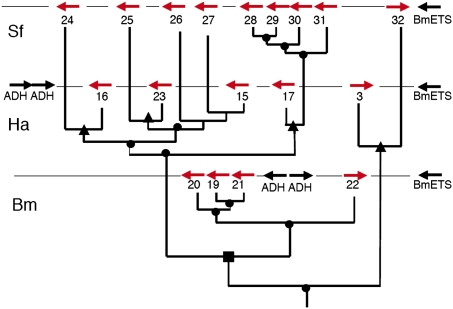Fig. 4.
Evolution of the CYP9A gene cluster. The CYP9A genes in the three species are shown in their correct orientation and order, but not relative distance, on the BACs or scaffold. From top to bottom: Sf, S. frugiperda; Ha, H. armigera; Bm, B. mori. The phylogenetic tree based on alignments of the CYP proteins is superimposed with its correct topology, but with branch lengths modified for clarity of the figure. Gene duplication events (●), B. mori/noctuid split (i.e., ancient speciation rather than duplication event) (■), and the S. frugiperda/H. armigera split (▲) are indicated. The sequence of events for the CYP9A15, -26, and -27 genes is unresolved. The relative orientation of the genes indicates at least two inversions in addition to the duplication events. Recognized flanking genes [alcohol dehydrogenases (ADH) and BmETS transcription factor] are shown (see Fig. S2 for details).

